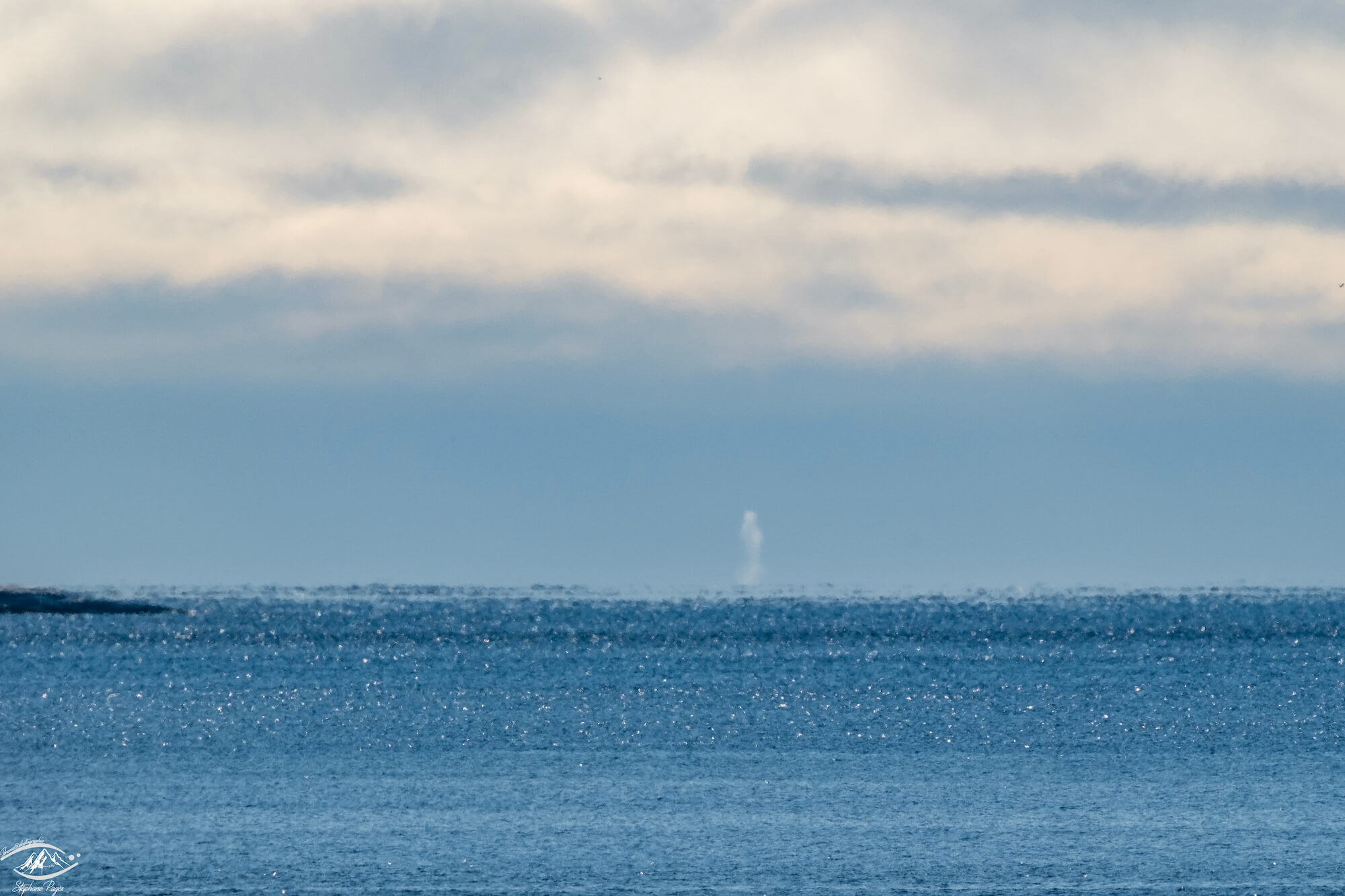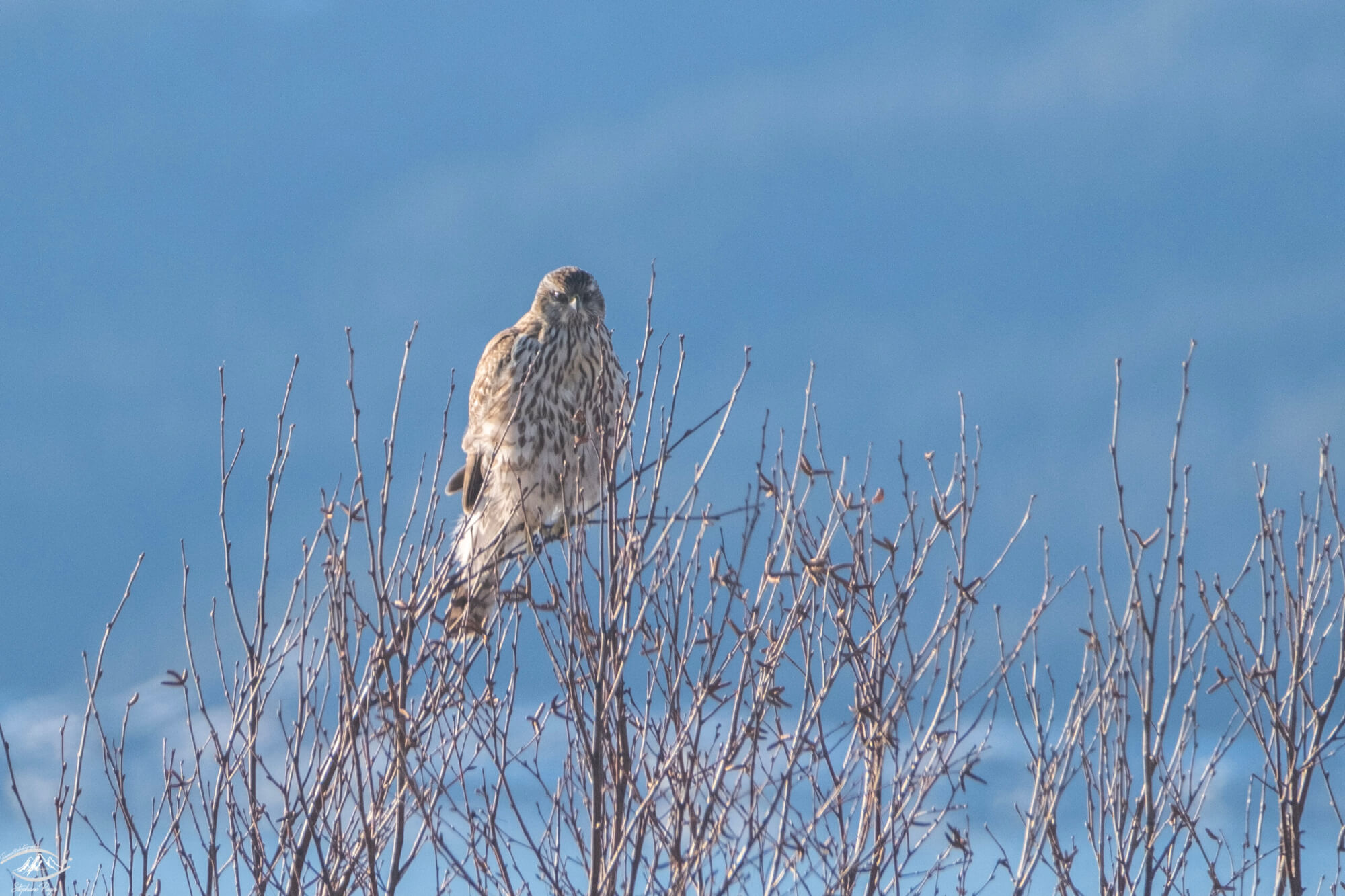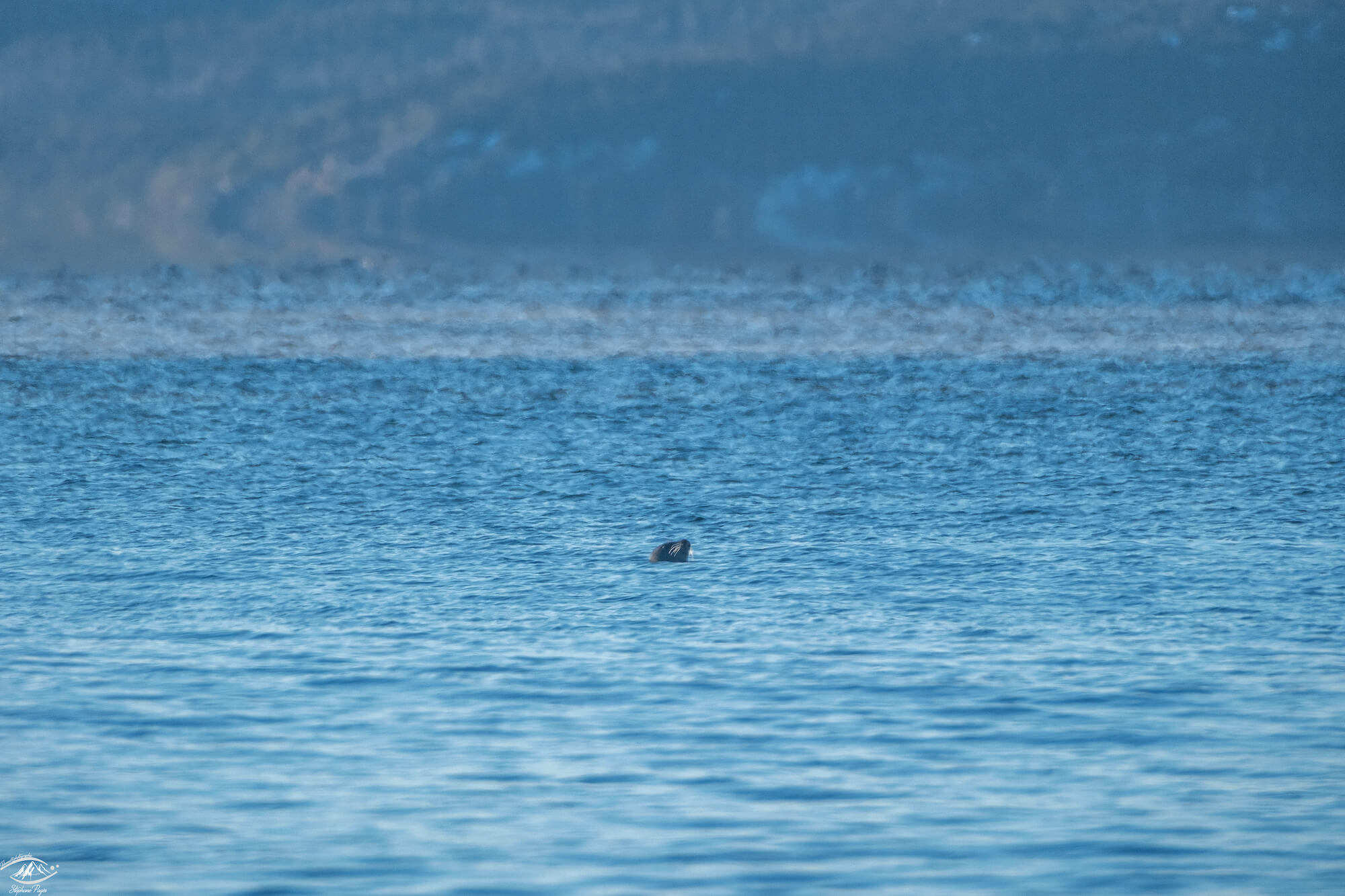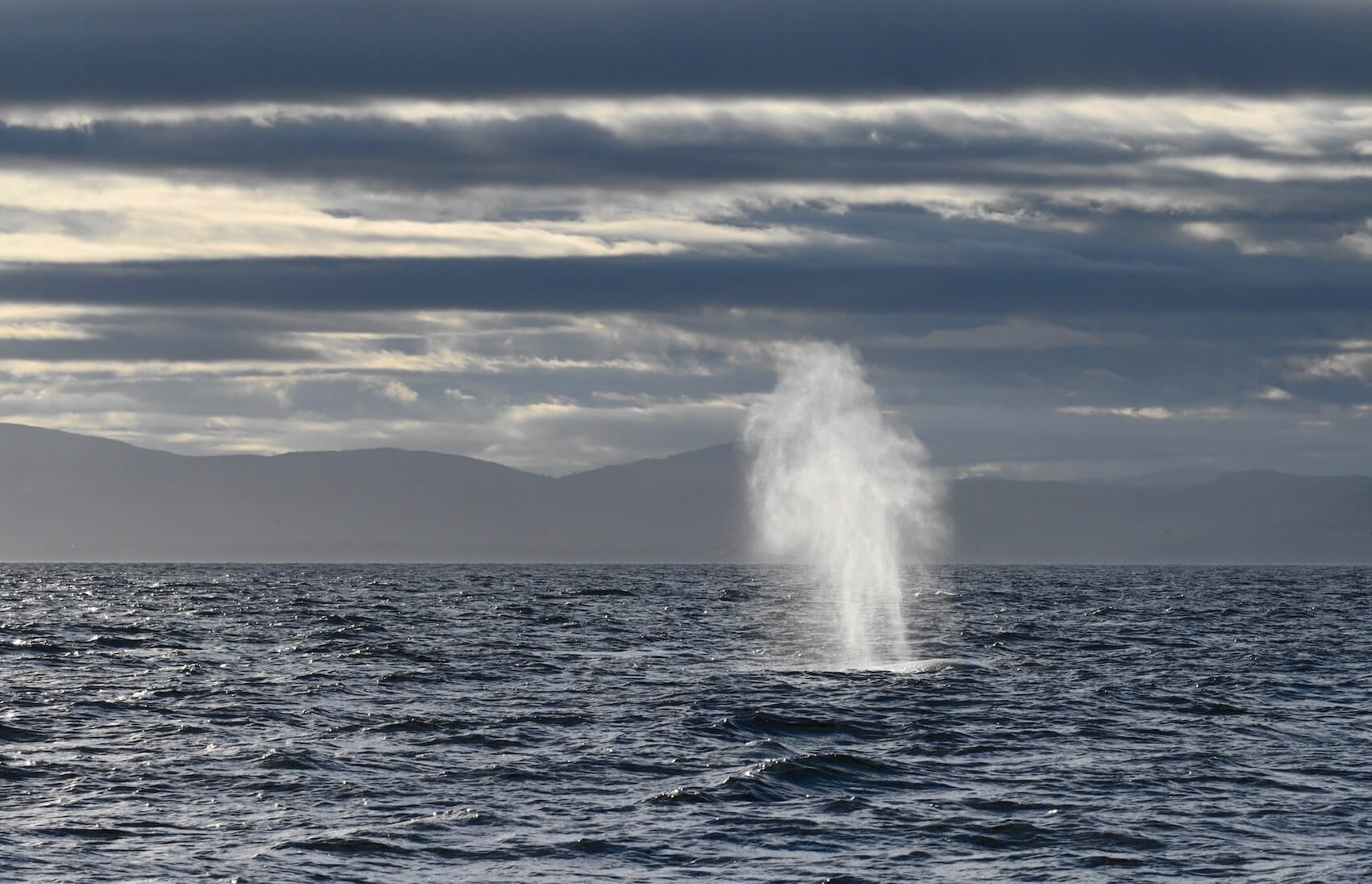To celebrate the holiday season and the start of winter, what could be better than admiring seals and cetaceans in their environment? In Sept-Îles, one observer was lucky to see a few marine mammals. Elsewhere along the St. Lawrence, however, the shores have been rather calm. There are reports of large blows amidst the snowflakes, a handful of seals, dolphins and a lone beluga.
Winter days in Sept-Îles
On the morning of December 23, a Côte-Nord resident enjoyed a nice surprise in terms of observations. “Santa Claus came early this year… two harbour seals holding their heads out of the water for a good while, a large blow (probably a blue given the height of the spout) offshore between the eastern keys and Grosse Boule Island, and a surprising sighting (my first ever in the middle of winter) of a female northern harrier . All from Routhier Beach in Sept-Îles.”
The next day, the whales would not disappoint. “There are two, most likely blues again given the size of their spouts.” They take two or three breaths before disappearing below the surface for a few minutes. The blue whale belongs to a category of cetaceans known as “gulpers.” To feed, the individual dives to reach its prey, then lowers its jaw to fill its mouth with krill before filtering out the water through its baleen. Since the dives of such a massive animal are particularly energy intensive, prey density must be optimal. According to one study, the average dive time is 7.8 minutes.
Blows in the blizzard
When it comes to locating marine mammals, one’s ears are every bit as important as one’s eyes. Though he couldn’t see much, one regular was able to hear a whale let out a few blasts on a snowy day. The cetacean must have been close to shore, somewhere between Baie-Comeau and Franquelin. In Gaspésie, another observer spots a harbour seal near Haldimand Beach.
In Les Escoumins, a resident saw no fewer than four dolphins swimming near the wharf on a beautiful day before the Christmas holidays. Near Tadoussac, a beluga was reported calmly heading down the Saguenay River on December 18. The solitary individual was swimming near Pointe-Noire on the opposite shore. On January 9, two friends spotted a harbour seal during their lunch break. “It was getting tossed by the waves quite a bit, but it looked so cute with its nose pointed skyward. It almost looked as if it was trying to stack the odds in its favour so it wouldn’t get a lungful of water.” To help them breathe without “getting a mouthful,” seals have nostrils that close tightly, similar to the blowholes of whales. Very convenient!
Thanks to all our collaborators!
Special thanks go out to all our observers who share their love for marine mammals with us! Your encounters with cetaceans and pinnipeds are always a pleasure to read and discover.
On the water or from shore, it is your eyes that give life to this column.
Marie-André Charlebois
Laetitia Desbordes
Diane Ostiguy
Mathieu Marzelière
Élizabeth Melis
Diane Ostiguy
Stéphane Pagès
Pascal Pitre
Andréanne Sylvain
Marielle Vanasse
And to all the others!
Additionally, we would like to acknowledge the following teams that also share their sightings:
Sept-Îles Research and Education Centre (CERSI)
Group for Research and Education on Marine Mammals (GREMM)
Marine Mammal Observation Network (MMON)
Quebec Marine Mammal Emergency Response Network (QMMERN)
Mingan Island Cetacean Study (MICS)
Would you also like to share your observations?
Have you seen any marine mammals in the St. Lawrence? Whether it’s a spout offshore or just a couple of seals, drop us a line and send your photos to [email protected]!







